Quality classic viennoiserie, fresh new flavours, and value offerings can help bakery retailers and foodservice operators grab a share of the UK’s high-flying pastry market, according to recent research by Délifrance.
The bakery supplier has published its ‘Prove It: Viennoiserie’ report, which analysed results from a consumer research survey conducted on 1,000 UK adults who regularly eat pastry products. It also leant on Délifrance’s internal market estimates and insight, external market data, and the experience and views of food trends experts Harris & Hayes.
“Viennoiserie is one of the most vibrant parts of the retail and foodservice bakery markets and offers many opportunities to excite consumers and generate growth,” commented Stéphanie Brillouet, marketing director at Délifrance.
Here are some of the key findings of the report:
Ahead of the market
Viennoiserie has been a star performer in retail and foodservice, outpacing growth of sweet and savoury bakery in both channels.
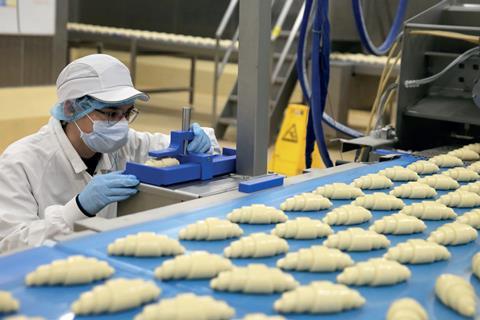
UK consumers were found to have spent more than £1.4bn on bakery products (excluding bread) over the past 12 months, according to Circana data, representing 12% growth. However, this was bettered by sales of viennoiserie and Danish pastries, which were up by 15% meaning the category now claims almost a third (28%) of the non-bread bakery market share for retail.
The story was repeated in foodservice, with estimates from Délifrance and analysts Gira putting viennoiserie growth at 7%, comfortably ahead of the overall market’s 4% increase. While some of the value growth could be explained by price rises, the disparity in figures in the survey revealed clear evidence of rising consumer demand for viennoiserie, said Délifrance.
Growing appetite
One in every three consumers interviewed (33%) revealed that they’d increased their consumption of pastry products over the past year, while the proportion of those saying they’d cut down on fell from 36% (in 2019 research) to 21%.
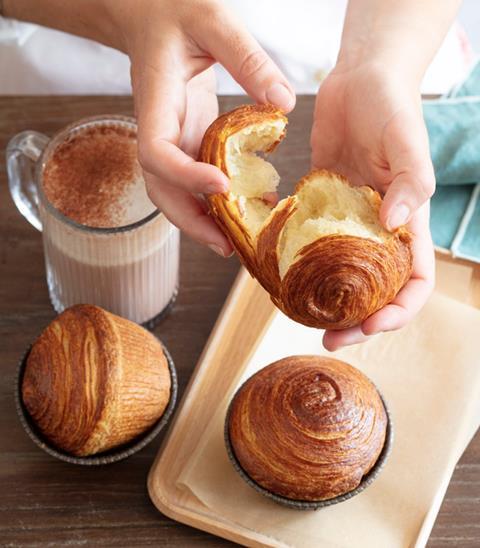
The frequency of pastry eating also appeared to be on the ascent, with almost two-thirds (64%) of respondents confirming to do so at least once a week, up from 53% in 2019. Tellingly, the ratio of those enjoying a pastry multiple times a week had nearly doubled from 24% five years ago to a current 42%.
“What was historically an occasional treat, has now become a cornerstone of the British diet,” noted food trends experts Harris & Hayes.
Interestingly, the cost-of-living crisis has led to people splashing out on moments of indulgence. “We do find that overall engagement with pastries increases in times of economic difficulties, with them being viewed as affordable treats,” said Délifrance marketing director Stéphanie Brillouet, who added that consumers cited taste as the key reason for eating more of them.
It should be noted, however, that price has overtaken freshness as the second most important factor – after quality – driving purchasing decisions. When talking about packaged pastries, price becomes the biggest focus, with retailers understandably embracing this with value-focussed offerings.
Sense of occasions
Breakfast remained a key mealtime for viennoiserie, as confirmed by 91% of survey respondents. A sizeable majority (75%) of the breakfast club said they ate pastries at home, although a smaller proportion (54%) admitted to purchasing them out of home. This suggests there may be opportunities for bakers to grow the out-of-home market, highlighted Délifrance.
Snacking, meanwhile, is deemed hugely important with 93% of consumers saying they would gladly devour a pastry a snack throughout the day. The small gap between survey respondents eating pastries at home (73%) versus out of home (70%) was said to be an indication that more could be done on product innovation, packaging, and marketing.

There’s also a growing trend on impulse purchases of pastries, with research finding 60% of people acting on a whim when grabbing a bakery treat, up from 50% in the 2020 survey.
Appearance (42%) and smell (41%) topped the list of triggers behind impulsiveness, while value and innovation were becoming increasingly significant. As was promotional activity, which saw more than a quarter (27%) of respondents saying it encouraged pastry purchases, up from 12% in 2020.
“Good-looking pastries will catch the attention of shoppers so merchandising is key, and the aromas created by baking throughout the day will draw consumers in,” highlighted Délifrance’s Brillouet.
What a shopper wants
Bakers are advised that the core of their viennoiserie range – be it for retail or foodservice – should be just half a dozen products including plain croissants, pain au chocolat, chocolate croissant (or chocolate twist), cinnamon pastry, almond croissant, and pain aux raisins.
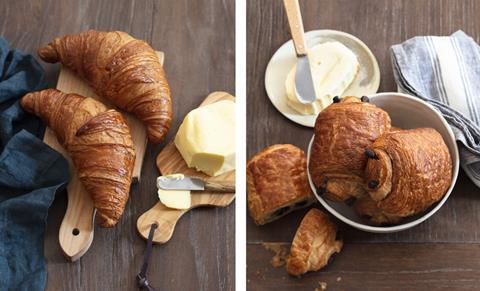
If a business can stock more than six lines, the following products are recommended depending on the outlet type:
| Outlet | Products |
|---|---|
| Supermarket ISB | Savoury pastry (e.g. cheese twist), apple pastry, vanilla custard pastry, additional chocolate pastry, sweet nutty pastry |
| Café / Coffee Shop | Fruity pastry (e.g. apricot, berries), sweet nutty pastry, premium pastry (e.g. hybrid – depending on customer base), additional chocolate pastry, savoury pastry |
| C-Store ISB | Vanilla custard pastry, apple pastry, other fruity pastry (e.g. apricot, berries), savoury pastry, additional chocolate pastry |
| Bakery | Premium pastry (e.g. hybrid – depending on customer base), savoury pastry, fruity pastry (e.g. apricot, berries), sweet nutty pastry, vanilla cream or custard pastry |
To meet consumer demand for more flavour choices, bakers need to keep a space for newness and seasonality – one in four survey respondents said knowing there were new pastries to try would encourage them to buy more frequently.
The top sweet flavours that consumers were looking for were chocolate (especially milk chocolate), vanilla, cinnamon, caramel, berries, and honey. Brillouet suggests more exotic fruits could be tempting such as passion fruit and pineapple, while Harris & Hayes thinks brands need to find ways to innovate within chocolate for an elevated offering, like pushing into the milk-dark space.

On the savoury flavour side, cheese reigned supreme including pairings with ham or onion, while meat (especially bacon or ham) and mushrooms were also most desirable.
“Savoury pastries like a cheese twist or ham and cheese pastry have the benefit of slipping into both morning and afternoon routines, and are not necessarily as synonymous with breakfast as the plain croissant,” asserted Harris & Hayes.
Where a shopper wants them
Unsurprisingly, supermarkets are where most consumers said they buy their pastries, either from an in-store bakery or as a packaged product. High street bakeries, meanwhile, had more than a third of pastry fans popping in.
| Where consumers buy their pastries | Respondents |
|---|---|
|
Supermarket ISB |
47% |
|
Packaged from supermarket |
42% |
|
Independent or chain bakery |
34% |
|
Café or coffee shop |
30% |
|
C-store/forecourt ISB |
28% |
|
Frozen to bake-at-home |
28% |
|
Packaged from c-store/forecourt |
25% |
Most notably in the table above is the stat for frozen pastries, with more than a quarter of pastry consumers (28%) now saying they bought frozen pastries to bake off at home – up from just 8% four years ago.
The Délifrance report put this trend down to pandemic lockdowns, when consumers visited cafés and coffee shops less frequently, and foodservice brands and suppliers rolled out retail pastry products to supermarkets. Although trade at foodservice outlets has somewhat recovered since, there’s been growing awareness of bake-at-home products and their presence in stores.
Healthier for minds and planet
Whereas demand for healthier baked goods appears to be on an upwards trajectory – giving rise to non-HFSS brands such as Jnck Bakery (cookies), Urban Legend (doughnuts), and Griddle (waffles) – consumers appear to be less guilty about indulging in pastries.
Comparing surveys from 2020 and 2024 showed that the number of consumers saying they’d be encouraged by health claims to eat more pastries had fallen from 38% to 30%.

The role of sustainability, meanwhile, was expected to grow. More than two thirds of consumers (71%) said they would like to know more about the sustainability credentials of the baked goods they buy, and four in ten shoppers revealed they would choose an outlet based on such claims.
At present, only 5% of pastry consumers have sustainability as a top consideration when making a purchase, but this figure rises to 8% among under 35-year-olds, meaning suppliers and retailers cannot afford to ignore the environmental and social impact of their products and operations.
The full Délifrance report is free to download here.



















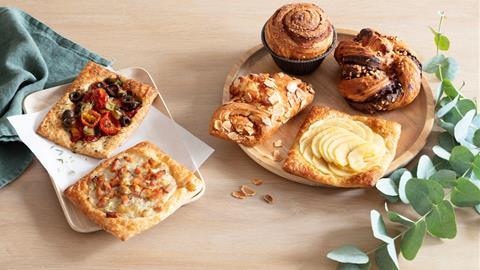

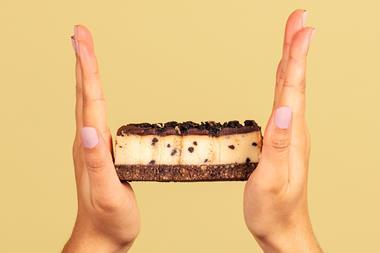
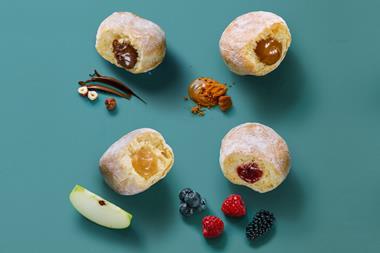


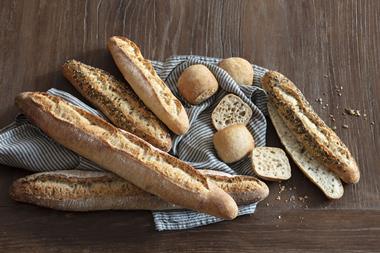


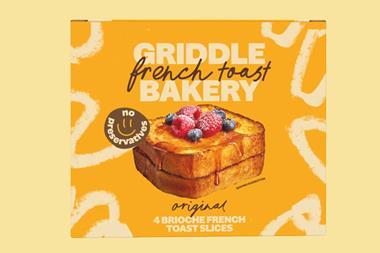
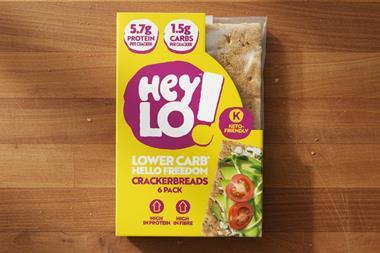

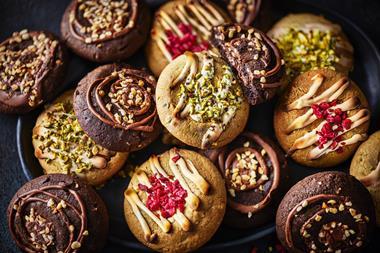

No comments yet